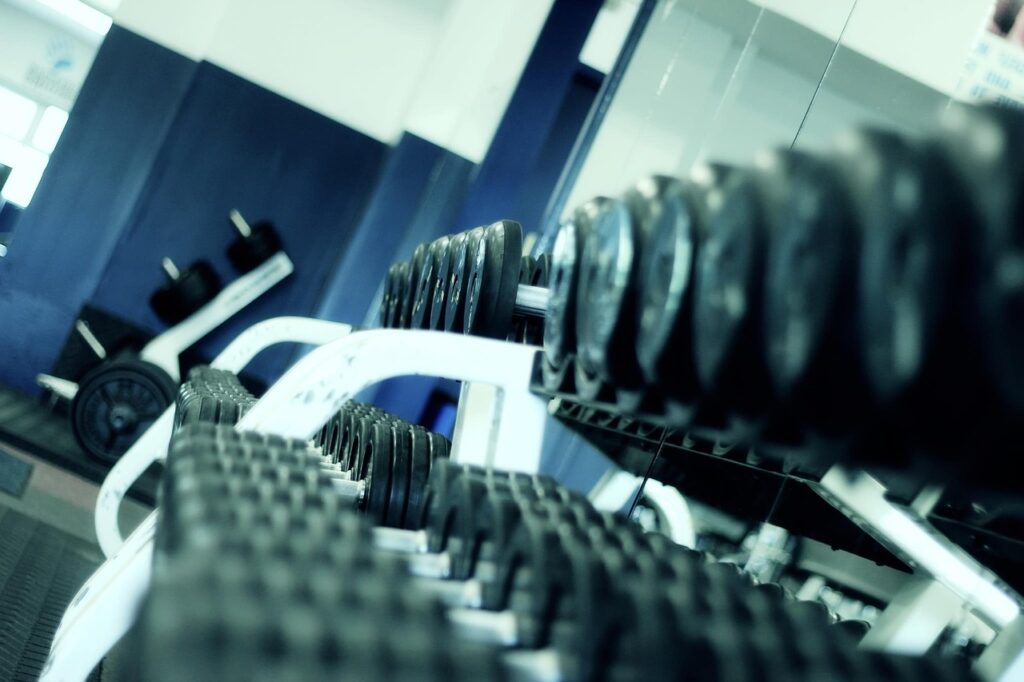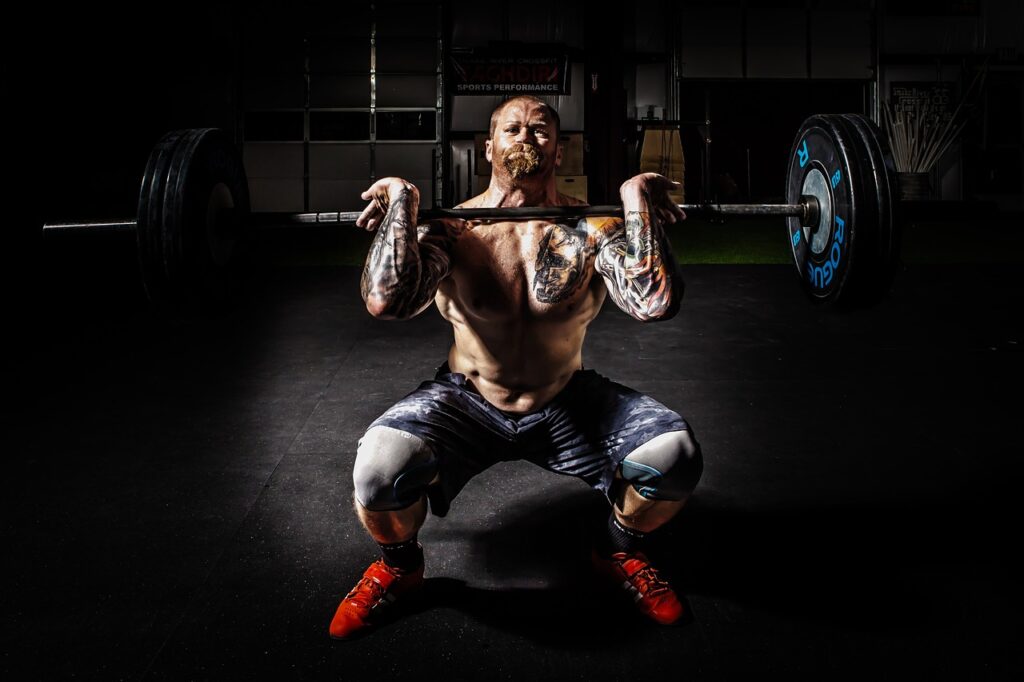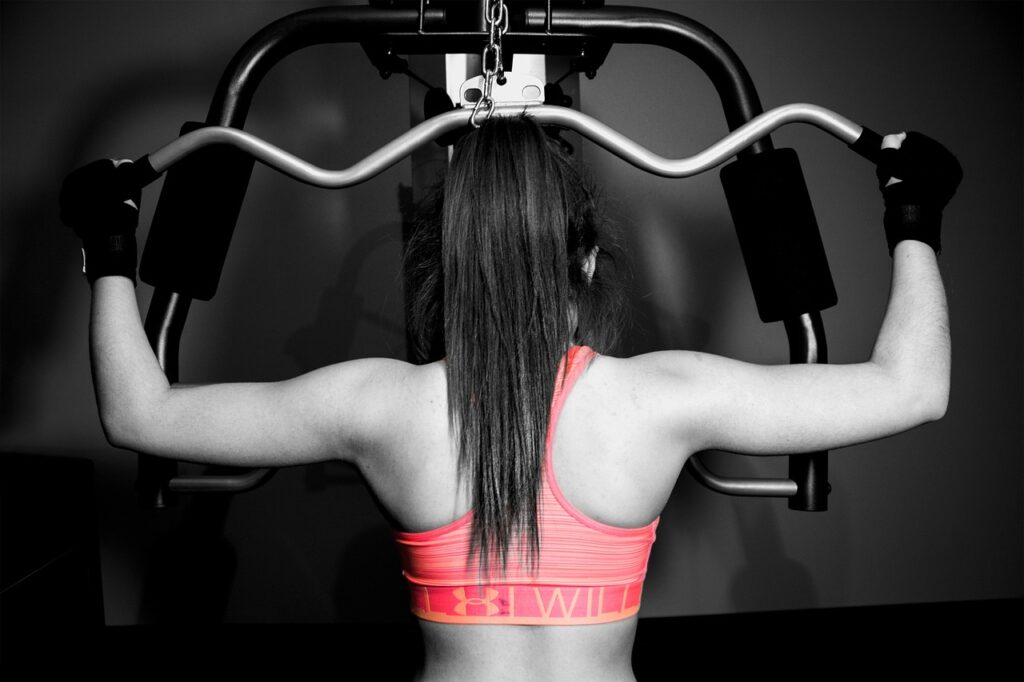For many people who exercise, the objective is to gain muscle. Is it beneficial? Surprisingly, there is nothing wrong with being muscular as long as you are eating well and taking care of your body. This blog post will discuss the several advantages of gaining muscle.
By releasing insulin after a meal to get glucose into cells for fuel, building muscles assists in controlling blood sugar levels. -Muscles prevent bone loss because, through their contractions and uncontrollable motions, they raise the quantity of calcium in bones. - Additionally, it lessens joint stress, which prevents the deterioration of the cartilage between joints, which can cause injuries or arthritis in later life.
Most people who work out at the gym want to either develop a slim physique or a massive muscular one. Different exercise regimens can help you achieve either body type, and each one has advantages and disadvantages in terms of your health. Which body type is therefore ideal for you?
Because of these factors, a lean body is preferable to a bulky one: is more adaptable and gives you a toned, natural-looking figure. It is accomplished by shedding exterior fat to expose underlying muscle. On the other hand, while having a large, muscular body may be appealing, doing so often at the expense of your health can have serious consequences.
Fat Vs. Muscle
Pounds are not all made equal. In actuality, your overall body weight isn't a reliable predictor of your appearance or potential health risks.
When one person has a high percentage of fat and the other has a high percentage of muscle, two persons who weigh the same amount can seem significantly different.
A 20-pound increase in body fat could make you look softer and less toned. However, 20 pounds more of muscle will seem carved and firm.
Additionally, fat serves a different purpose than muscle. Body fat serves as insulation and a heat-retention medium. Your metabolism is boosted by muscle. As a result, having more muscle increases your resting calorie expenditure.
We are all aware of the benefits cardiovascular exercise has on blood pressure, cholesterol, and the heart. And you already know that any form of exercise that raises your heart rate aids in calorie burning and the loss of extra weight, whether you decide to jog, ride a bike, or walk.
But that only solves half the problem.
Strength training is crucial for a well-rounded fitness regimen. It can reduce your chance of injury, boost bone density, decrease the loss of muscle that comes with ageing, strengthen your muscles and connective tissues, and lessen arthritic pain.
Strength training is crucial, according to professional fitness trainer Debbie Siebers, not just for your bones but also for your muscles. It serves as a prophylactic measure against osteoporosis and other issues.
Muscle-building exercise can also enhance balance, lessen the risk of falling, improve blood sugar control, and enhance sleep and mental health, according to CDC studies.
And let's not overlook the advantages for losing weight. Building muscle not only helps you seem leaner and more toned, but it also promotes continued calorie burning long after your workout is over.
"You're still burning calories three to four hours after a strength-training workout," asserts Seibers, the director of fitness programmes including the "Slim in 6" series.
For dieters, strength training is extremely crucial. Up to 25% of your weight loss during weight reduction may come from muscle, which might cause your metabolism to stall. If you have lost muscle mass due to dieting, strength training can help you gain it back or prevent it from happening in the first place.
Muscle Enhance Blood Sugar Control
An epidemic of diabetes was brought on by sedentary lifestyles and high-carb diets (obesity and diabetes). In addition to being prediabetic or diabetic, about two thirds of the population are overweight or obese.
However, obesity and diabetes don't necessarily go hand in hand. A healthy weight is achieved by 20% of people with diabetes or prediabetes.
You could follow a ketogenic diet to completely cut out carbs in order to treat the blood sugar issue. Alternately, you might consume carbs in a more modest amount while adding muscle to your body to make room to store them.
Your skeletal muscle and liver both store glucose as glycogen. But if you don't work out frequently, and especially if you don't lift weights, you lose your capacity to store carbohydrates. Lack of storage causes your blood sugar to increase, your pancreas to secrete insulin, and you to store fat. Your ability to store glucose increases as your muscle mass increases.
There is also ample proof that dysfunctional insulin and blood sugar levels contribute to heart disease, cancer, cognitive issues, and hastened ageing.
Bulky Body: A Basic Overview
We use the term "bulky body" to describe the muscular build that is typical of bodybuilders, wrestlers, and actors; think of The Rock. For obvious reasons, this body shape is popular, and more individuals are working out to get it.
Because testosterone helps muscles grow and expand, men can get a bulkier physique more easily than women. The path to a bulkier physique entails many hours spent in the gym, strict dietary regimens, and occasionally, supplements.
Bodybuilders go through two stages to get a bulky physique. the building of their muscles during the bulking phase, and the fat loss and muscle definition efforts during the cutting phase.
People that have excessive measures taken to obtain this physique, including but not limited to the usage of steroids, hazardous substances, and dirty bulking, are often thought to have unhealthy bulky bodies. Exaggerated body components might make you appear unnaturally big; think of bodybuilders with huge arms and lean legs.
Large muscles use a lot of energy, which causes them to burn fat more quickly. They also appear good, which may contribute to people's improved self-image. According to several studies, a lack of muscles may be a helpful sign of depression.
Tips For Losing Weight
Building muscle is just one aspect of weight loss. Here are some weight-loss suggestions:
Consume a balanced diet rich in nutritious foods.
Cutting calories is only one element of weight loss. It also involves consuming the proper caloric amount. To help you feel fuller for longer, up your consumption of fruit, veggies, and lean protein. Reduce or get rid of unnecessary calories like sweetened coffee, soft drinks, and highly processed snacks.
Avoid skipping meals.
You should limit calories if you want to lose weight. But if you drastically reduce your calorie intake, your body may enter starving mode. This may hinder your attempts to lose weight by slowing down your metabolism.
Setting achievable goals is important.
Aim to lose no more than one to two pounds per week, unless your doctor has advised otherwise.
Everyday exercise
Exercise doesn't necessarily have to involve breaking a serious sweat. Take the stairs or get off the bus a few stops early to add some extra steps. Try lifting weights during commercial breaks if you watch television at night rather than skipping them or getting a snack.
Don't use the scale.
Occasionally, avoiding the scale can keep you on track. That's because you won't experience those days when carrying around extra water weight makes you appear to have put on weight. Rather, pay attention to how your clothing fits.
Are your thighs and waist snug when you're not wearing pants?
Make use of a nutritionist. Consider consulting with a dietitian if you've been eating well and exercising but haven't noticed any weight loss. Your diet and portion sizes can be adjusted, which might assist you start losing weight.
Change it up.
Consider changing things up if you consistently consume the same foods and work out in the same way. That can help you avoid weight reduction plateaus and keep you from getting bored.
Speak to a doctor. Consider consulting your doctor if you are worried about your weight. They can assist you in developing a weight loss plan and setting reasonable targets.
Machines Or Free Weights?
Both free weights and weight machines are effective, and experts say there isn't any proof that one is better than the other, so the decision is mostly up to you.
According to Seibers, machines are a fantastic solution for those who are overweight and/or out of shape because the workouts are typically performed while seated and with back support.
However, if using equipment is not an option, spending a few dollars on a set of light dumbbells and/or resistance tubing can provide you with all you need to begin sculpting those muscles.
Regardless of your decision, the experts advise starting out with simple movements. Try these exercises for the arms and upper body:
- Chest presses
- Back flies in reverse
- shoulders-focused overhead presses
- Do bicep curls
- Extensions or kickbacks of the triceps
Avoid starting your lower body workouts with squats and lunges since they might strain joints that are already weak. Instead, attempt:
- Quadriceps extensions for the front of the thigh.
- The rear of the leg is reached by hamstring curls.
- Working the inner and outer thighs while standing or resting on one's side.
Don't forget to strengthen your "core" muscles, which are those in your lower back and abdomen. Carver asserts that the key to preventing injuries is core stability. She explains that if a person can't support their trunk while performing an exercise like a bicep curl, they could injure themselves.
By mixing up your routines, you'll also reduce the risk of injury and achieve the optimum results. For instance, Siebers advises that if you work your biceps, back, and legs one day, you should work your triceps, chest, and shoulders the following session. Giving the muscles you worked plenty of time to recuperate, alternate between muscle groups.
According to Carver, including stretching in your strength-training regimen will also assist prevent injuries. Above all, don't exert too much pressure. "Feeling little soreness in the muscle is OK, but feeling it in the joint is not," Carver constantly advises his audience.
According to her, you might need to perform modified versions of some workouts or omit them entirely if you have a medical condition or a history of injury. When that happens, working with a fitness trainer is crucial.
Lean Body: An Introduction
Imagine a pilates or yoga instructor; they have a trim physique with lean muscles and low body fat. You have more flexibility and a naturally lean shape if you have a slim body. The key to achieving this body type is fat loss rather than true muscle growth.
Underneath the excess fat, everyone has muscle. You can get a lean body by concentrating on exercises that burn fat. A diet that provides fewer calories than the daily need could be a component of your plan. To make up for the calorie shortage, the body must turn to its fat reserves, which causes weight loss.
Long-term fat loss is another benefit of a toned physique in addition to flexibility. Therefore, a few diet cheats won't erase all of your hard work.
Stick to the program
According to Siebers, organisation and ongoing assistance are essential for success. Schedule it, she advises: So that you know exactly what to expect of yourself, plan out your exercise week in advance.
One of the greatest ways to stay on a programme, according to Siebers, is to workout with a friend, even if that friend is a virtual one.
She claims that online forums and support groups are really motivating. "Every night, a million people who are in your identical circumstances gather online to support one another. People require daily hand-holding."
But among the most crucial things you need for a successful strength training programme — or for effective weight loss — are patience and acceptance, she says.
People tend to gaze too far into the future while trying to grasp the larger picture, she claims. You must make an effort to accept and appreciate yourself as you are right now and understand that things will get better every day.
Your emotional state may change if you exercise
You can unconsciously slump, droop your head, and fold your arms when you're feeling down or melancholy. You adopt the posture of the feeling you're experiencing.
According to research, it also works the other way around: When you adopt an emotion's posture, you start to feel that emotion. When using a smartphone or working, how are most people seated? identical to how people sit when they're depressed.
There are many things you can do to make your workspace more ergonomic, but you can also counteract some of the negative impacts of bad posture by increasing muscle in a balanced approach.
For instance, when creating upper-body workouts for clients, we frequently choose a combination of roughly 60% pulling or back movements and about 40% pushing movements. Then, clients can concentrate their muscle-building exercises on correcting their posture and easing the impacts of scrolling while sitting.
According to the research, when people take better care of their posture, their emotional states also tend to improve.
Which One Is Best for You?
To determine which body type is appropriate for you, you might wish to take into account your objectives. If you participate in sports that call for a massive physique, like wrestling, then having a bulky body would be ideal.
Go for it if you value a lean body's adaptability and versatility. A flexible body is advantageous for sports like ballet and martial arts.
It is advised to only employ healthy methods to accomplish your goals, regardless of the body type you choose. Think about maintaining a healthy diet, refraining from using steroids, and taking supplements in moderation.
Conclusion
Both slim and bulky bodies can have advantages and risks. Over time, having a toned body is thought to be healthier. It is vital to follow healthy habits and seek professional guidance when attempting to achieve either body type.
Please think about the risks involved if you choose to go for a bulkier physique. Even if it takes considerably longer and more work, you would benefit from just using healthy methods to reach your fitness goals.
What muscle mass is healthy?
Your age, sex, height, weight, activity level, genetics, and muscle mass determine your health. You can determine your ideal muscle mass range using broad principles. The American Council on Exercise (ACE) reports that men have 36-45% muscular mass and women 28-37%. BIA, DEXA, and skinfold callipers can quantify muscle mass %.
How does being muscular affect your heart health?
Being muscular can improve your heart health by lowering your blood pressure, cholesterol, and triglycerides, and increasing your blood flow and oxygen delivery. However, being too muscular or having too much body fat can also strain your heart and increase your risk of cardiovascular disease.
How does muscle metabolism influence you?
Muscle increases your basal metabolic rate (BMR) and metabolism. You can burn more calories throughout the day without exercising. However, a hunger response or thermic impact from being excessively muscular or eating too much can reduce your metabolism.
How can being muscular influence ageing?
Maintaining muscle mass, bone density, and joint mobility can slow ageing. As you age, you can preserve strength, function, and quality of life. Being excessively muscular or lifting too much might accelerate ageing by damaging tissues, organs, and DNA.
What's the mental health impact of being muscular?
Muscles boost mood, self-esteem, confidence, and intellect. Muscles make you happy, more confident, capable, and focused. Being excessively muscular or preoccupied with looks can cause anxiety, melancholy, body dysmorphia, and eating disorders.


